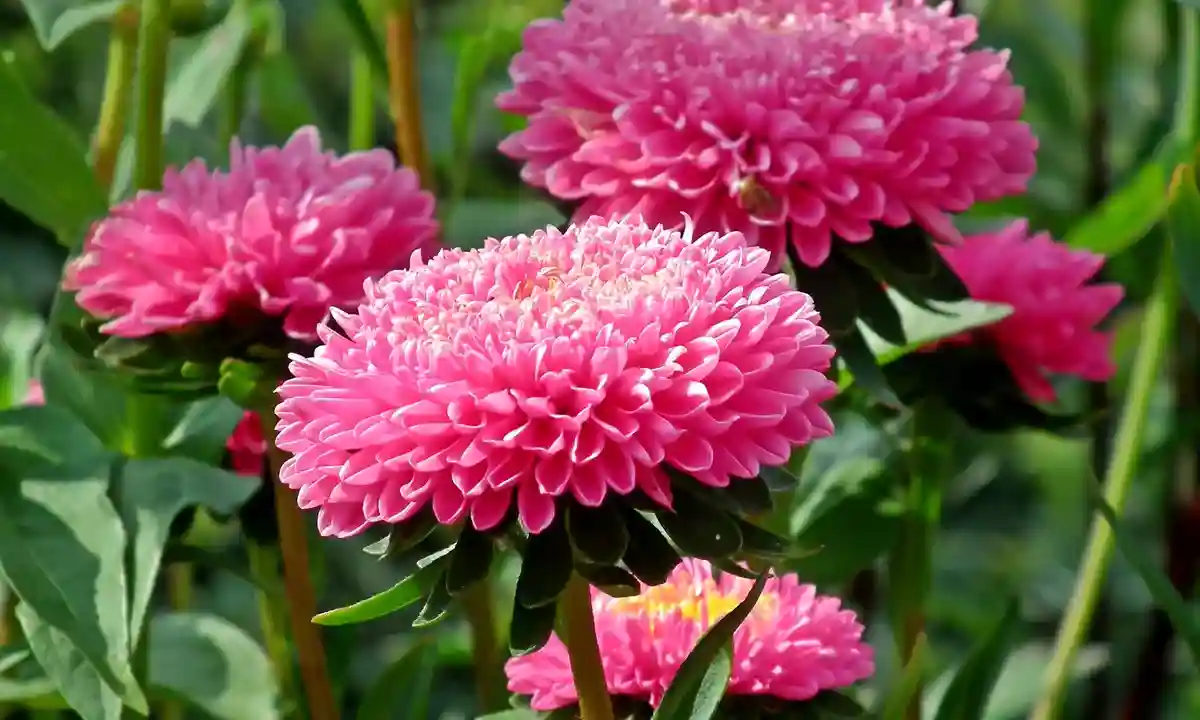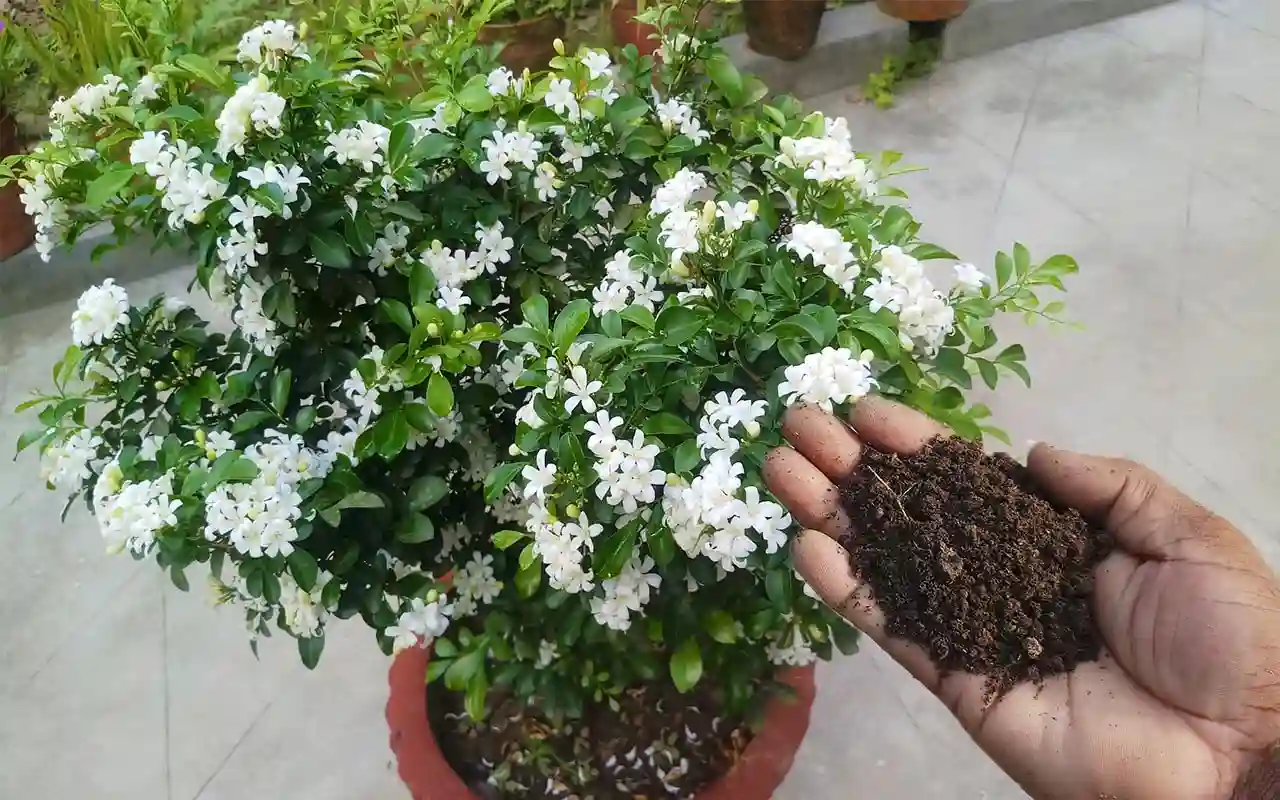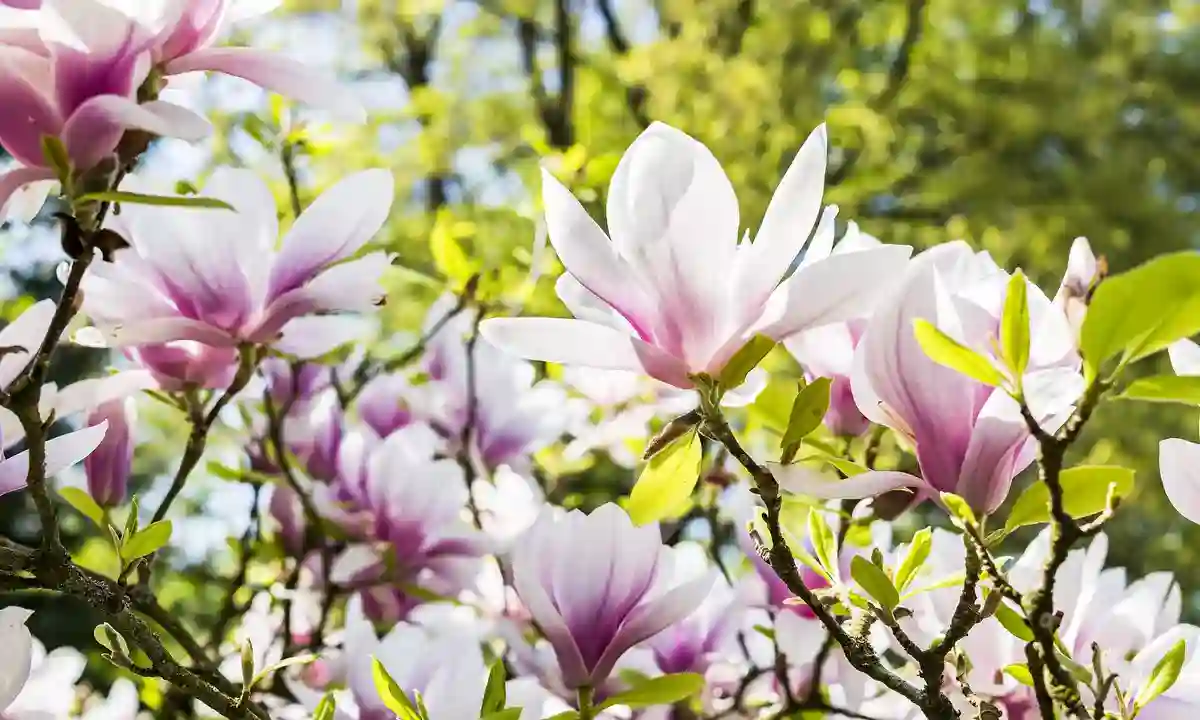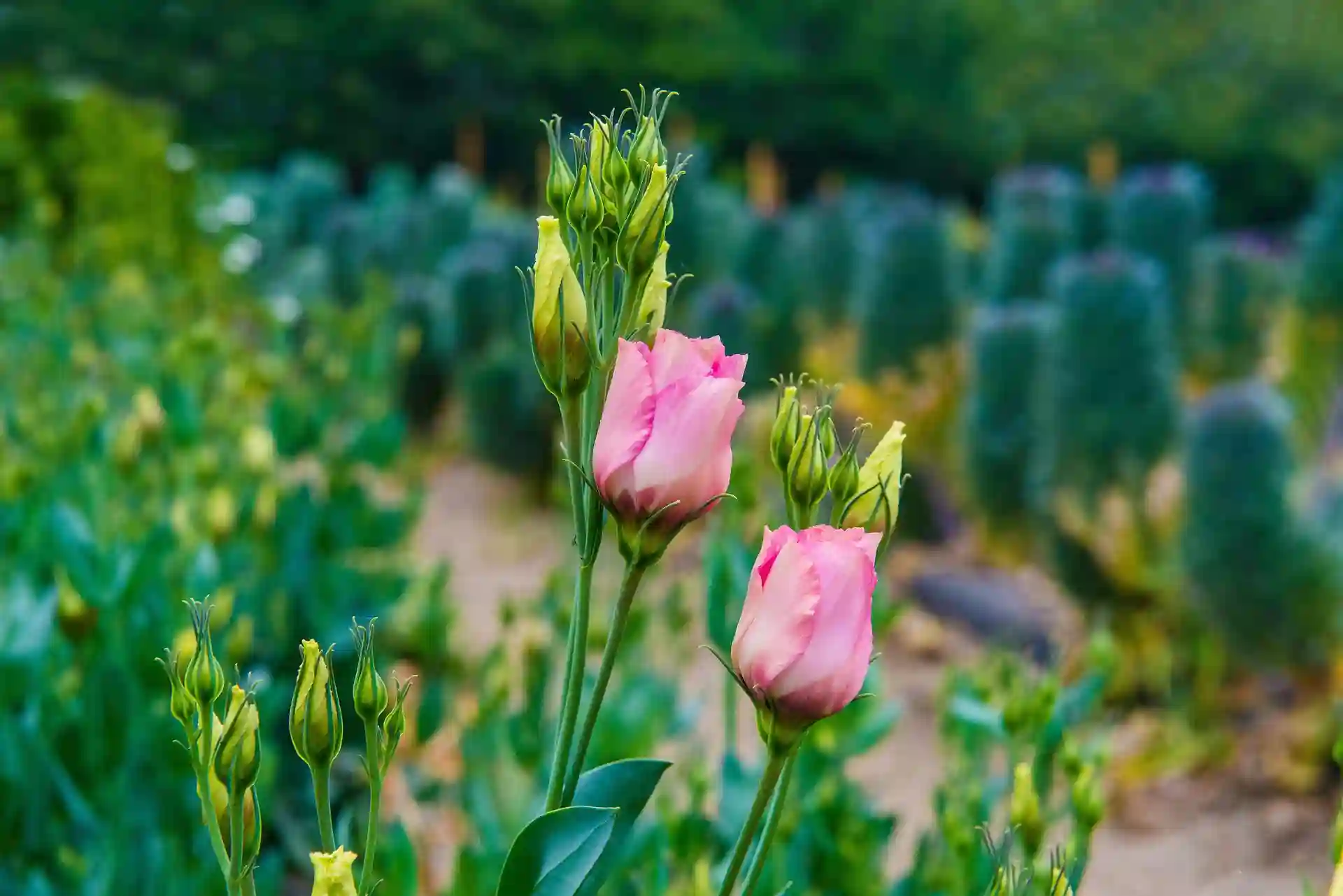With the beauty of aster flowers and their bright and vibrant colors, any winter flower pairing is a match. In today’s report you will learn about aster flower plant care and maintenance. There is an aster variety for every color from light to dark pink, purple.
Asters are annual or perennial plants that bloom from early summer to spring. New England aster species often bloom in late summer and into fall, while alpine asters bloom in spring. Depending on the variety, plants can grow to be 1 to 6 feet tall.
Easy to Care for Asters Flower Plant
Asters is a flower popular in the European continent including Asia that belongs to the Asteraceae family, scientific name Aster. Scientific names for many species in the Aster genus include Aster dumosus (Bushy Aster), Aster patens (late Purple Aster), Aster vimineus (Small White Aster), and Aster praealtus (Willow Aster). New England aster (Symphyotrichum novae-angliae) and New York aster (Symphyotrichum novi-belgii) are the two most common garden aster species.Several years ago, the genus Aster was divided into several genera. Aster now covers most of the European and Asian asters. The word “aster” is derived from the Greek word “star”, which is an apt name for this star-like flower.
Asters is one of the largest plant families in the world. Asters are popular garden plants and valued for their bright flowers, which come in a variety of colors including white, pink, purple, blue, and yellow. They are easy to grow and a great addition to any garden, providing long-lasting color from late summer through fall.
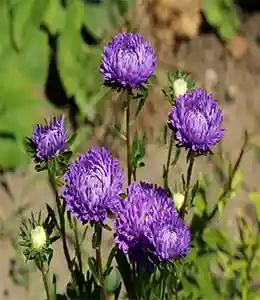
Asters are relatively easy to care for and maintain, making them popular for cultivation by both experienced and novice gardeners. Esther prefers well-drained, fertile soil and full sun, but will grow in partial shade. The plants are relatively drought-tolerant, making them the preferred plants for gardeners in arid regions. which has a pH level of 5.8 to 6.5. If your soil is alkaline, you can improve it by adding organic matter such as leaf rot, leaf mold or compost.
One of the best things about asters is that they attract a wide variety of pollinators, including bees, butterflies, and hummingbirds. This makes them a great choice for gardeners who want to encourage pollinators in their garden.
Asters are versatile, easy to grow, and make a colorful addition to any garden. They provide a lively attraction from the onset of winter. Aster can be a great choice flower for your garden, whether you’re a seasoned gardener or just starting out. In addition to being a valuable pollinator plant for bees and butterflies, its tasty seed heads are sought after by cardinals, chickadees, finches, nuthatches and many other seed eaters.

Place for Aster Plants:
When deciding where to plant your aster flower, choose a location that receives full sun to partial shade.Asters like well-drained fertile soil and don’t like soggy soil, so make sure the soil has good drainage. Asters are fairly drought-tolerant and, once established, require little maintenance. By choosing the right location, you can ensure that your asters grow strong and healthy, producing a beautiful display of flowers for years to come.
Soil Preparation for Asters:
Aster flowers prefer well-drained, fertile, loamy soil rich in organic matter. To prepare the soil for planting asters, follow these steps:
Test the soil: Before planting, test the soil to determine the pH level and nutrient content of the soil. Asters 6 prefer a slightly acidic soil with a pH range of 5.8 to 6.5. If the soil is too alkaline, you need to amend it with sulfur or peat moss.
Add compost or organic matter: Adding compost or other organic matter to the soil will improve its structure and fertility. It will also help retain moisture and prevent soil compaction. Vermicompost or one year old rotted dung manure or leaf litter and equal amount of bone meal, equal amount of horn meal, neem cake and little phosphate should be mixed with it.
Dig and loosen the soil: Once the soil has been amended, dig a hole for each aster plant, leaving enough room for the roots to spread. Loosen the soil below each hole to encourage root growth.
Mulch: After planting, spread a 2-3 inch layer of mulch around the base of the aster. This will help conserve moisture and suppress weeds.
Water: Regular watering is essential for asters, especially during dry periods. Keep the soil evenly moist, but not waterlogged. Overwatering can cause root rot.
By following these soil preparation steps, you can ensure that your asters have the right conditions to thrive. Asters are hardy plants that are easy to care for, so with proper soil preparation they should grow strong and healthy.
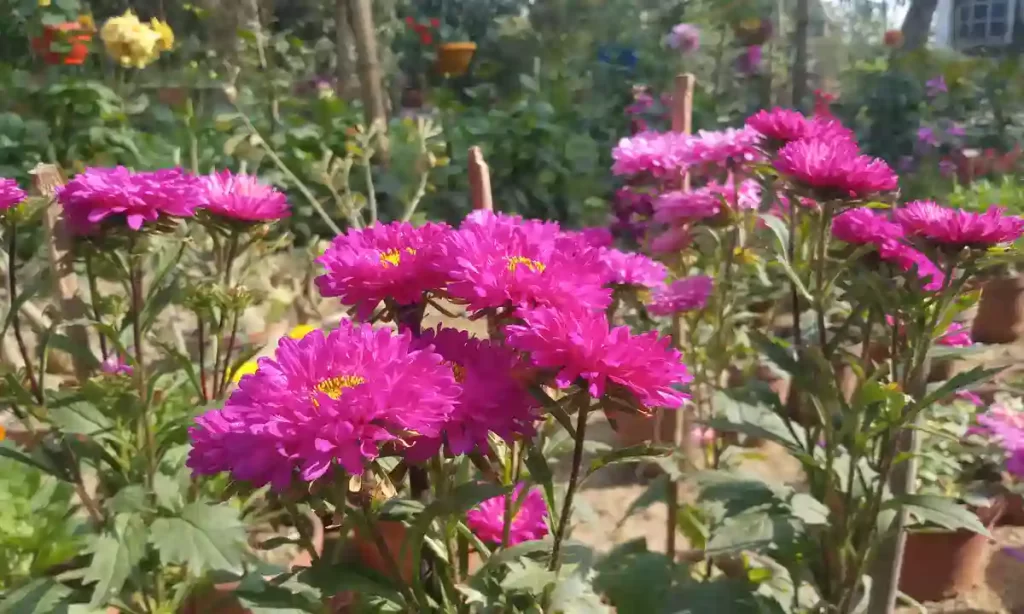
Place for Aster Plants:
Choose a location that receives full sun to partial shade when deciding where to plant your aster flower.Asters like well-drained fertile soil and don’t like soggy soil, so make sure the soil has good drainage. Asters are fairly drought-tolerant and, once established, require little maintenance. By choosing the right location, you can ensure that your asters grow strong and healthy, producing a beautiful display of flowers for years to come.
Soil Preparation for Asters:
Aster flowers prefer well-drained fertile loamy soil rich in organic matter. To prepare the soil for planting asters, follow these steps:
Test the soil: Before planting, test the soil to determine the pH level and nutrient content of the soil. Asters 6 prefer a slightly acidic soil with a pH range of 5.8 to 6.5. If the soil is too alkaline, you need to amend it with sulfur or peat moss.
Add compost or organic matter: Adding compost or other organic matter to the soil will improve its structure and fertility. It will also help retain moisture and prevent soil compaction. vermicompost or one year old rotted dung manure or leaf litter an equal amount of bone meal, equal amount of horn meal, neem cake and little phosphate should be mixed with it.
Dig and loosen the soil: Once the soil has been amended, dig a hole for each aster plant, leaving enough room for the roots to spread. Loosen the soil below each hole to encourage root growth.
Mulch: After planting, spread a 2-3 inch layer of mulch around the base of the aster. This will help conserve moisture and suppress weeds.
Water: Regular watering is essential for asters, especially during dry periods. Keep the soil evenly moist, but not waterlogged. Overwatering can cause root rot.
By following these soil preparation steps, you can ensure that your asters have the right conditions to thrive. Asters are hardy plants that are easy to care for, so with proper soil preparation they should grow strong and healthy.
Water Application:
Aster flowers require regular watering to ensure healthy growth and bloom, especially during dry periods. Here are some guidelines for watering asters:
Water deeply: When you water plants, water deeply to allow the roots to grow into the soil. It will also help prevent drought stress.
Avoid overwatering: While asters need to be watered on a regular basis, it is critical to avoid overwatering, which can lead to root rot.Make sure the soil drains well and check the soil moisture regularly to make sure it’s not too wet.
Water in the morning: The best time to water aster plants is in the morning, so that the leaves have time to dry. It will help prevent diseases.
Drought Tolerance: Asters are relatively drought-tolerant, so if you live in an area with limited water, you may need to water them once a week. However, if your asters are in full sun, you will need to water them more frequently.
Temperature:
Aster flowers are hardy plants that can withstand a wide range of temperatures, making them suitable for a variety of climates. Here are some temperature guidelines for aster plants:
Tolerance for Heat: Asters are relatively heat-tolerant and can thrive in hot summer climates. However, if temperatures are extreme, plants may need to be placed in a location with some protection from the sun and heat.
Cold Tolerance: Asters are also cold-hardy and frost tolerant, making them suitable for cold climates. In regions with severe winters, you may need to provide a protective mulch layer to insulate the roots.
Ideal Temperature: Asters prefer temperatures between 60°F and 75°F. If the temperature is too high or too low, it can affect the growth and flowering of the plant.
Avoid Extreme Fluctuations: Asters do best in stable temperatures and can be sensitive to extreme temperature fluctuations. Do not place aster plants where temperatures fluctuate rapidly, such as near air conditioning units or heating vents.
Best Aster Plant Fertilizers:
Plants require special food to increase the number of aster flowers, especially if the soil is nutrient poor.
Start with organic fertilizers: Before planting, mix compost or other organic matter into the soil to improve its fertility. This will provide a long-lasting boost of nutrients for the aster plant.
Use a balanced fertilizer: Once plants are established, you can use a balanced fertilizer, such as a 10-10-10 (N.P.K.) formula, to promote healthy growth and flowering. Apply fertilizer according to the manufacturer’s instructions.
Timing: The best time to fertilize plants is in the winter, just as new growth is starting. You can fertilize again in mid-spring for more blooms.
Avoid Excess Fertilizer: It is important to avoid excess fertilizer, as it can lead to excess foliage and fewer flowers. Be sure to follow the manufacturer’s instructions carefully and not exceed the recommended amount of fertilizer.
Aster Flower Pest Control:
Asters are relatively resistant to pests, but it’s still important to watch for any problems. Common pests include aphids, spider mites, and Japanese beetles. For pest control, you can use insecticidal soap, neem oil, or a strong blast of water from a hose to knock the pests off the plants. If you’re worried about chemical pesticides, you can try companion planting with herbs like marigolds or basil to help repel pests. Regular monitoring and prompt treatment of any pest problems will help keep your aster healthy and blooming.
